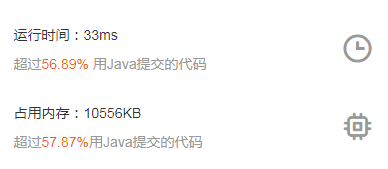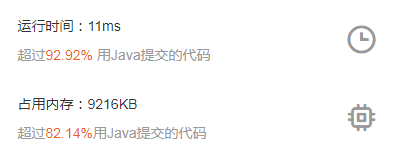1、题目描述
接受一个只包含小写字母的字符串,然后输出该字符串反转后的字符串。(字符串长度不超过1000)。
题目来源: https://www.nowcoder.com/practice/e45e078701ab4e4cb49393ae30f1bb04?tpId=37&tags=&title=&difficulty=0&judgeStatus=0&rp=1
2、示例
输入描述:输入一行,为一个只包含小写字母的字符串。
输出描述:输出该字符串反转后的字符串。
示例1:
输入:abcd
输出:dcba
3、思路
有了前车之鉴,上篇文章提到的反转整数的题目,很快会想到用stringBuffer的 reverse()反转函数。
代码如下:
import java.util.*; public class Main{ public static void main(String[] args){ Scanner sc = new Scanner(System.in); while(sc.hasNextLine()){ StringBuffer sb = new StringBuffer(sc.nextLine()); sb.reverse(); System.out.println(sb); } } }
提交结果:

还不错,击败了一半的人。但是呢?你想啊,面试官给你出这个题目,能让你用一个函数就解决掉嘛?
所以,这个题目的意思,肯定是让你自己实现reverse() 函数的原理。
so.......
思路2:
将输入的字符串转换成字符数组,然后逆序输出。
代码如下:
import java.util.*; public class Main{ public static void main(String[] args){ Scanner sc = new Scanner(System.in); while(sc.hasNextLine()){ String str = sc.nextLine(); char[] chs = str.toCharArray(); for(int i = str.length()-1; i>=0;i--){ System.out.print(chs[i]); } } } }
看看提交结果如何:

还不如思路一。因为自己又设定了一个char[] 数组来存放转换的字符串,所以内存空间又增大了。
所以啊,还是根据上篇经验,只有序列化输入输出才会可能提高速度。
思路3:
import java.io.*; public class Main{ public static void main(String[] args) throws IOException{ InputStream in = System.in; int len; byte[] b = new byte[1024]; while((len = in.read(b)) > 0){ String str = new String(b,0,len-1); char [] chars = str.toCharArray(); char [] charsFb = new char[chars.length]; for(int i = 0;i<chars.length;i++){ charsFb[i] = chars[chars.length -1 -i]; } System.out.println(new String(charsFb)); } } }
输出结果:

果然,快多了,而且内存占用也少了。
Over......